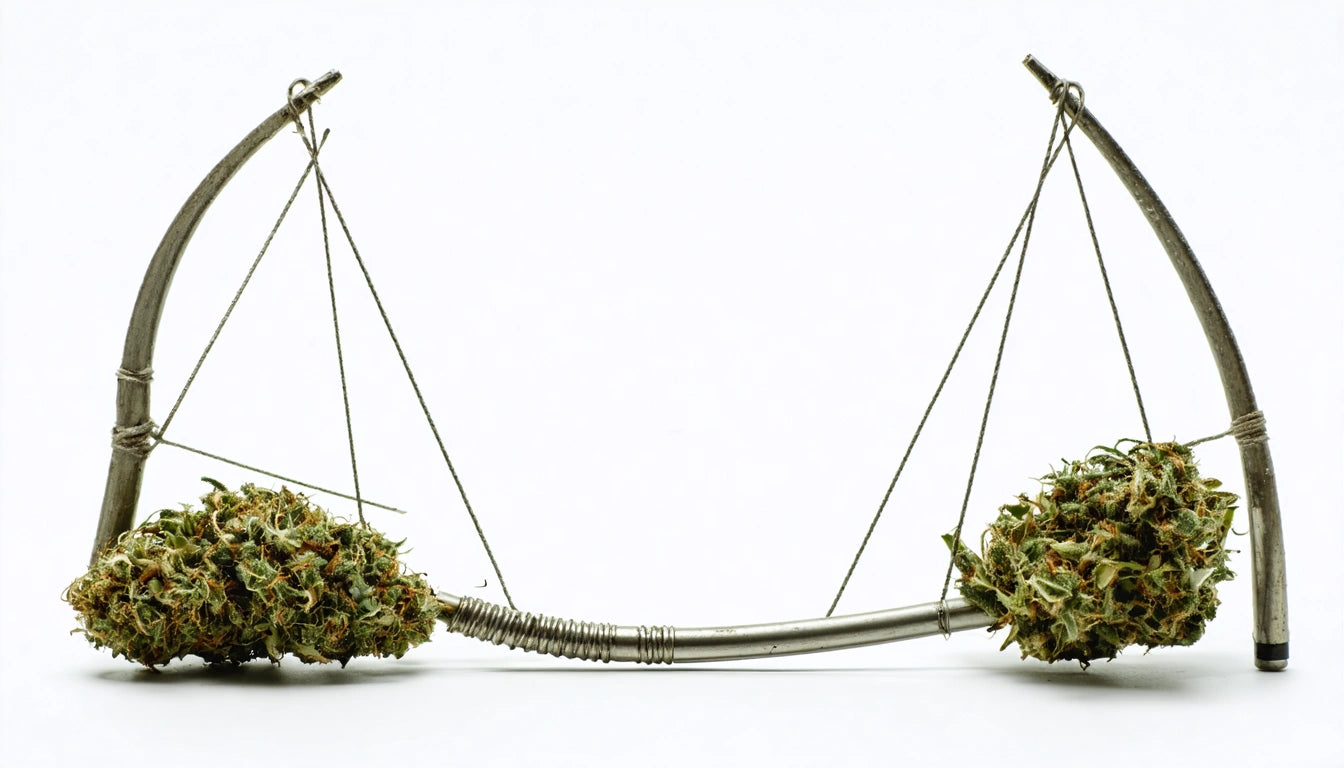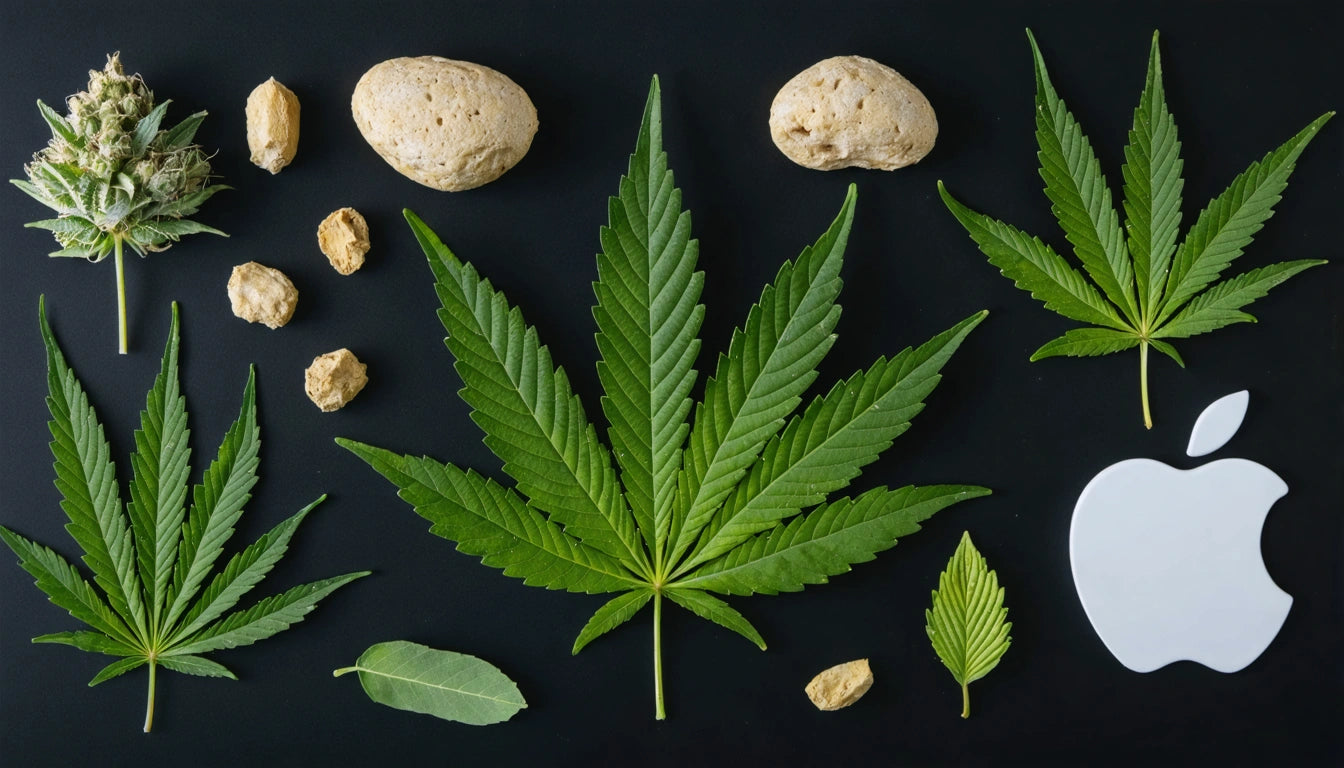Table of Contents
Understanding a Bow of Weed: Definition, Weight, and Cost
Cannabis terminology can be confusing for newcomers and even experienced consumers, especially when it comes to quantities and measurements. One term that often raises questions is "bow of weed." This comprehensive guide explains what a bow of weed is, how much it weighs, what it typically costs, and why this measurement matters in cannabis culture.
What is a Bow of Weed?
A "bow" of weed is slang terminology for a pound of cannabis. The term "bow" is short for "elbow," which itself is cannabis slang derived from the abbreviation "lb" for pound. In cannabis terminology, this represents a significant quantity typically purchased by dispensaries or used in wholesale transactions rather than by individual consumers.
Understanding what a bow in weed terms means is important for anyone involved in the cannabis industry or interested in cannabis culture. While most recreational users purchase in grams or ounces, knowing larger measurements helps comprehend the supply chain and pricing structures.
Weight and Measurement: How Many Grams in a Bow
To break down exactly how much weed is a bow:
- 1 Bow (Pound) = 16 ounces
- 1 Bow = 448 grams (approximately)
- 1 Bow = 64 quarters (1/4 ounce each)
- 1 Bow = 128 eighths (1/8 ounce each)
This substantial amount is rarely purchased by individual consumers in legal markets. Instead, this quantity is typically handled by businesses within the supply chain. For context, a typical cannabis consumer might purchase anywhere from 1 gram to an ounce (28 grams) for personal use, making a bow approximately 16 times larger than what most individuals would buy at once.
Cost Factors: How Much is a Bow of Weed?
The cost of a bow of weed varies significantly based on several factors:
Quality and Strain
Premium strains with high THC content, exceptional terpene profiles, or rare genetics command higher prices. The difference between standard and premium cannabis can result in price variations of several thousand dollars per bow.
Geographic Location
Prices vary dramatically by region based on:
- Legal status (legal markets vs. black markets)
- Local supply and demand
- Tax structures in legal states
- Production costs in the area
According to our comprehensive guide on cannabis costs, legal market prices for a bow can range from $1,000 to $3,000 depending on these factors.
Regional Variations in Terminology
Cannabis terminology varies widely across different regions and communities. While "bow" or "elbow" is common in many areas of the United States, other regions might use different terms for the same quantity. This regional variation in cannabis slang is part of the rich cultural tapestry surrounding cannabis use and distribution.
In some areas, people might simply refer to this quantity as a "pound" or "unit" without using slang terminology at all. Understanding these regional differences is important for anyone discussing cannabis quantities across different markets.
Storage Considerations for Larger Quantities
Proper storage becomes critically important when dealing with larger quantities like a bow of weed. Cannabis degrades over time due to exposure to air, light, heat, and humidity. For businesses or individuals handling this quantity, investing in proper storage solutions is essential.
Humidity control is particularly important for maintaining freshness and potency. Using humidity control packs in your storage containers can help maintain optimal moisture levels, preventing your cannabis from becoming too dry or developing mold issues.
Additional storage recommendations include:
- Using airtight containers to prevent oxidation
- Storing in cool, dark places away from direct sunlight
- Separating different strains to preserve unique terpene profiles
- Considering vacuum-sealed options for longer-term storage
Practical Applications and Benefits of Buying in Bulk
For businesses in the cannabis industry, understanding bow quantities is essential for inventory management and pricing strategies. Dispensaries, processors, and manufacturers typically purchase in these larger quantities to benefit from wholesale pricing.
The primary advantages of purchasing by the bow include:
- Significant cost savings per gram compared to smaller quantities
- Reduced frequency of reordering and associated logistics
- Ability to maintain consistent supply of popular strains
- Lower packaging waste compared to multiple smaller purchases
While individual consumers rarely purchase in bow quantities, understanding these larger measurements provides insight into how the cannabis supply chain operates and how pricing is determined at various levels of distribution.
For those involved in the legal cannabis industry, knowledge of standard quantities like bows helps in developing business plans, managing inventory efficiently, and calculating appropriate markups for retail pricing. This understanding becomes particularly important when developing product lines and determining pricing strategies for different market segments.
Whether you're a cannabis business owner, budtender, or simply an enthusiast looking to expand your knowledge of industry terminology, understanding what a bow of weed represents provides valuable context for navigating the complex world of cannabis measurements and pricing.











Leave a comment
All comments are moderated before being published.
This site is protected by hCaptcha and the hCaptcha Privacy Policy and Terms of Service apply.